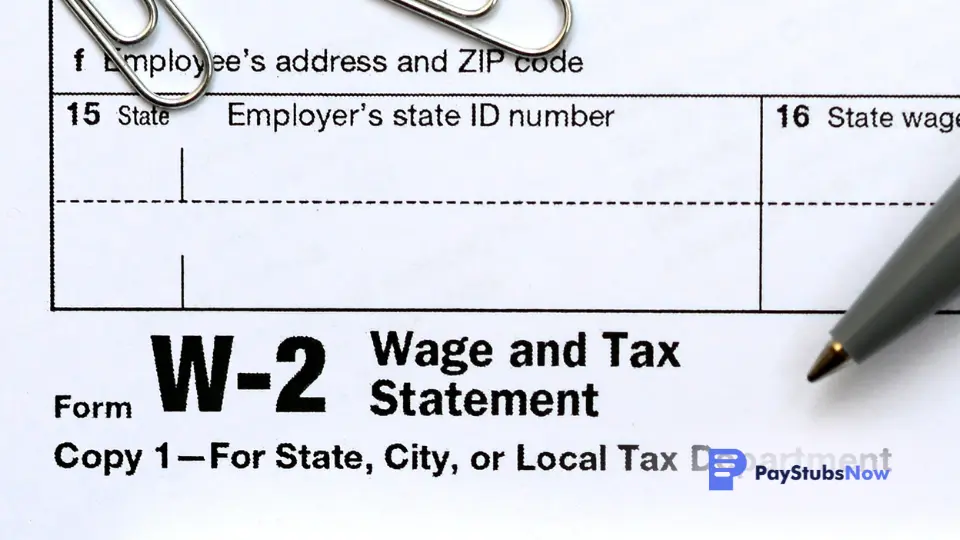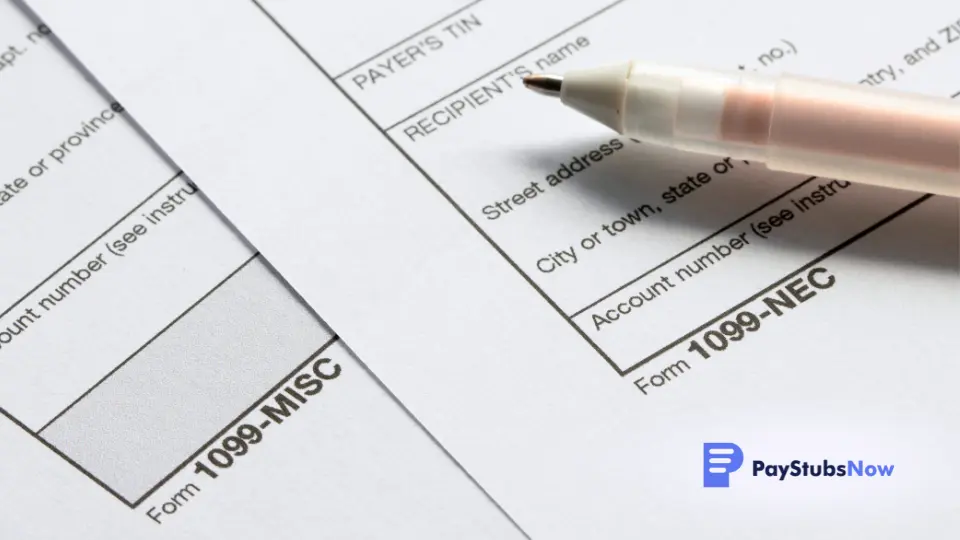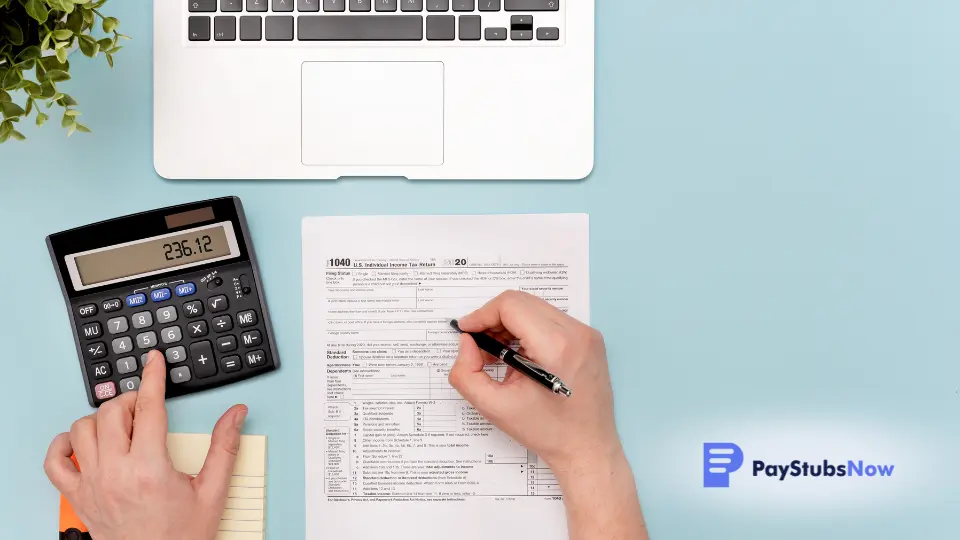12 Essential Payroll Forms for Employers
If you're a business owner or employer, getting your payroll right is essential for business processes and compliance with the IRS. This isn't just about cutting a check every month—it involves understanding terms like W2, 1099, I-9, and more. You'll need to know which form to use, when, and why.
In this comprehensive guide, we'll walk you through 12 key payroll forms and offer tips on avoiding common errors.
Main Highlights of Payroll Forms
- Understanding various payroll forms, including W-2, W-3, W-4, and 1099, and their specific uses is crucial for employers to comply with IRS requirements.
- Accuracy in payroll processing plays a pivotal role in avoiding errors, such as incorrect employee information, worker misclassification, math errors, missing deadlines, and filing incorrect forms.
- Recent changes and updates in regulations, such as the American Rescue Plan Act of 2021, have implications for payroll processing, thus requiring employers to continuously learn and be vigilant.
- Electronic filing and depositing of employment taxes, as prescribed by the IRS, aids in the efficient management of payroll records and adherence to regulatory requirements.
- Paystubsnow is a valuable tool for modern businesses, offering simplified generation and management of essential payroll forms to ensure compliance and efficiency.
12 Common Payroll Forms for Employers
Running a business involves numerous responsibilities, but perhaps the most crucial is handling payroll. Understanding the following 12 vital payroll forms is crucial for employers to ensure smooth and compliant operations.
1. Form W-2

The Form W-2 is critical to payroll and is submitted annually by employers who pay $600 or more to an employee for their services. This payroll form reports the total wages paid and the taxes withheld from an employee's pay.
To complete this form,you'll need details like:
- The employer's EIN
- The employee’s SSN
- Total wages
- Withheld tax amounts.
Don't forget about potential state tax liabilities! The form should be given to employees by January 31st of the following year and filed with the Social Security Administration (SSA) by the last day of February or March 31st if filed electronically.
2. Form W-3
Form W-3, also known as the Transmittal of Wage and Tax Statements, summarizes all of an employer's W-2 forms. Its primary function is to provide the total amounts of wages and withholdings reported on the W-2s.
To complete this form,you'll need details like:
- Total wages
- Social security wages
- Withheld Federal income taxes
- State taxes withheld.
This form is due to the Social Security Administration (SSA) by the end of January every year and should be accompanied by the actual W-2 forms.
3. Form W-4
Form W-4, also known as the Employee's Withholding Certificate, definitively determines the federal income tax withholding from an employee's paycheck. It assists employees in calculating the correct amount of federal tax to be deducted from their earnings.
To complete this form,you'll need details like:
- Personal data
- Income
- Adjustments
- Deductions
- Credits
This form is generally submitted by an employee during their onboarding process. However, it can be updated throughout the employment period whenever the employee's circumstances change.
4. Form W-9
Form W-9 is a necessary document that serves as a Request for Taxpayer Identification Number (TIN) and Certification. It is given to independent contractors and freelancers to provide accurate tax information to clients and is essential for generating 1099-MISC forms and verifying the taxpayer's identity and TIN.
To complete this form,you'll need details like:
- Your legal name or business name
- Your address
- TIN
- Business entity type
This form isgiven to the client before the completion of work or before any payment is made.
5. Form 1099

Form 1099 is a series of tax documents that self-employed or freelancers use to report income other than salaries, wages, and tips to the IRS. The purpose is to report different forms of income to the IRS, particularly those of self-employed individuals or freelancers.
To complete this form,you'll need details like:
- The payer's contact and tax details
- The recipient's contact and tax details
- The total amount of payments made during the tax year
Typically, Form 1099 must be filed with the IRS by January 31 following the tax year.
6. Form I-9
Form I-9, Employment Eligibility Verification, is a mandatory document for employers. Its purpose is to verify the identity and employment authorization of individuals hired for employment in the United States, both citizens and non-citizens.
To complete this form,you'll need details like:
- The new hire's identity and employment authorization documents.
- Employee's Social Security Number (SSN).
Form I-9 must be completed within three days of the employee's first work day. This is a rolling submission with no annual deadline. Retain the form for three years after the date of hire or one year after employment ends, whichever is later.
7. Form 940
Form 940, or the Federal Unemployment Tax Act (FUTA) Tax Return, is an annual requirement for employers. Its main purpose is to report and pay unemployment taxes that compensate workers who have lost their jobs.
To complete this form,you'll need details like:
- Employer identification number (EIN),
- Total amounts of all payments made to all employees throughout the year,
- FUTA tax after adjustments.
Notably, Form 940 should be submitted by you annually. It's imperative to have this form filed with the IRS by January 31st every year.
8. Form 941

Form 941, known as the Employer's Quarterly Federal Tax Return, is an essential document for employers. It serves major purposes:
- Reporting the number of employees
- Reporting the total pay of employees
- Calculating the social security and medicare tax owed
- Calculating the total employment taxes due after adjustments and credits
To complete this form,you'll need details like:
- Employer Identification Number (EIN)
- Employee's Social Security Number (SSN)
- Employees’ Personal Information
- Employee Compensation
- Payroll Tax Amounts
- Deposits and Due Dates
- Total Employees
You're required to file Form 941 quarterly; it gives the IRS a snapshot of your employment tax information. If, however, your annual liability is $1,000 or less, you may file Form 944 annually instead.
9. Form 944
Form 944 is designed for small employers to report their yearly federal income taxes, social security tax, and Medicare tax. It serves to minimize the burden for employers with an annual tax liability of $1,000 or less. Such employers can file this form annually instead of quarterly.
To complete this form,you'll need details like:
- Wages
- Tips
- Other compensation
- Federal income tax withheld
- The employer's share of Social Security and Medicare tax
This form gets submitted annually. However, monthly or semi-weekly deposits may be required. Employers can also file it electronically using the Modernized e-File (MeF) for Employment Taxes.
10. Form 1095-B
IRS Form 1095-B illustrates that a worker has minimum essential health coverage. The insurance company or employer provides this form to both the IRS and the insured party. Its primary goal is to report certain information to the IRS and taxpayers about individuals who are covered by minimum essential coverage and, therefore, are not liable for the individual shared responsibility payment.
To complete this form,you'll need details like:
- General personal information, such as personal and employer details
- Evident proof of insurance for each month of the year
This form is usually distributed to employees in January and needs to be submitted annually to the IRS.
11. Form 8027
Form 8027 is submitted by large food and beverage establishments for employer reporting. The purpose of this form is to report the tip income of employees.
To complete this form,you'll need details like:
- Employer's annual information
- Employee tip reports
- Charged tips
- Total of charge receipts
Generally, this form must be submitted by the end of February. However, if filings are done electronically, the deadline is extended to the end of March.
12. Form SS-8
Form SS-8, also known as the Determination of Worker Status for Purposes of Federal Employment Taxes and Income Tax Withholding, is widely used to designate an individual's working status—whether they classify as an employee or contractor—helping employers determine their tax liabilities.
To complete this form,you'll need details like:
- Detailed information about the nature of the job
- The worker’s earnings
- The level of control the business has over the worker
This form may be submitted any time you need to determine the tax status of a worker.
Other Important Payroll Forms
While we've covered the most common federal payroll forms, keep in mind that each state has its own tax forms that need to be filed as well. Here are some you might come across, depending on your business's location:
- State Unemployment Tax Forms: If you pay into a state unemployment program, you may need to file regular reports using state-specific forms. The intervals will vary by state.
- State Withholding Tax Forms: Many states have income taxes that your business is responsible for withholding. Similar to the Federal W-4 form, states often have a corresponding state-specific form to manage this.
- State New Hire Reporting Forms: In many states, newly hired employees must be reported to a designated agency or department. Each state has its own requirements and often a specific form to facilitate this reporting.
The specifics of these forms will differ depending on the state where your business operates. It's essential to familiarize yourself with the requirements in your specific state to ensure you're in compliance.
For more information on state-specific requirements, visit the IRS's State Government Websites page. To learn about additional tax forms you might need, explore the IRS's various Forms & Instructions.
Common Errors and How To Avoid Them

Indeed, filing payroll forms can often feel like navigating a maze. However, addressing common errors before they become major issues is a surefire way to stay on the right path. Here are some pitfalls to watch out for:
Mistake #1: Incorrect Employee Information
The devil is in the details. One simple yet common oversight is inaccurate employee information. This could be a misspelled name, wrong social security number, or incorrect address. Such mistakes can cause complications and delay the processing of forms.
Tip: Regularly update your records. This can be accomplished by having employees confirm their information annually. You might also consider using a database management tool that links directly to your payroll system, ensuring accuracy and consistency across platforms.
Mistake #2: Misclassification of Workers
Another common error is misclassifying employees as independent contractors and vice versa. This can lead to incorrect tax withholding and potential penalties from the IRS.
Tip: Understand the distinctions between an employee and a contractor. When in doubt, refer to the IRS guidelines or consult with a tax professional.
Mistake #3: Math Errors
Math errors happen, and if they are not caught, they can create significant issues. They can lead to incorrect withholding and paycheck totals.
Tip: Double-check your work. Consider using a payroll system that automatically calculates figures for you. A software upgrade could be a game-changer in avoiding this common mistake.
Mistake #4: Missing Deadlines
Missing payroll tax deadlines can result in fines and penalties. It’s crucial to stay on top of these dates.
Tip: Use automated reminders or digital calendars to keep track of important deadlines. Regularly review IRS guidelines and updates to stay well-informed about changes to due dates.
Mistake #5: Filing the Wrong Forms
Filing incorrect forms for your employees can cause significant complications with tax withholdings and potentially lead to severe penalties from the IRS.
Tip: Always double-check the IRS filing guidelines and choose the right forms. Remember: small businesses with an annual liability of $1,000 or less can file Form 944 annually instead of Form 941 quarterly.
Streamline Your Payroll Practices With Paystubsnow
Phew! That covers the essential payroll forms. But managing them all can feel like a second job. Here's where Paystubsnow comes in to simplify your life.
Paystubsnow is an online platform designed to streamline your payroll process, saving you time and minimizing errors. Here's how it can help:
- Effortless Form Generation: In minutes, generate accurate W-2s, 1099s, and other payroll forms. Simply enter the required information and let Paystubsnow take care of the calculations.
- Say Goodbye to Manual Work: Eliminate the hassle of manual data entry and calculations. Paystubsnow automates these tasks, reducing the risk of errors in every wage and tax statement.
- Stay Compliant, Stay Focused: Rest assured that Paystubsnow stays up-to-date with the latest tax regulations. This ensures your forms are compliant, and you can focus on your business.
- Peace of Mind, Guaranteed: Paystubsnow offers secure document storage and timely delivery, ensuring your employees receive their forms accurately and on time.
Ready to experience the Paystubsnow difference in calculating payroll taxes? Start generating W-2s and 1099s and see how they can streamline your payroll process.

